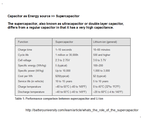danishdeshmuk
Advanced Member level 1
how to test Single P-Channel HEXFET Power MOSFET " IRF9520 " ?
thanks
thanks
Follow along with the video below to see how to install our site as a web app on your home screen.
Note: This feature may not be available in some browsers.
Short instructions on how to test mosfets with parallel diode
View attachment 65268
View attachment 65269
View attachment 65270
in pict. 3/3
capacitor has change-over switch for charging C
and connect charge to gate.
Test switch for dicharging C and Cgs
Yes
All types have non parallel diode, but testing procedure is same.
